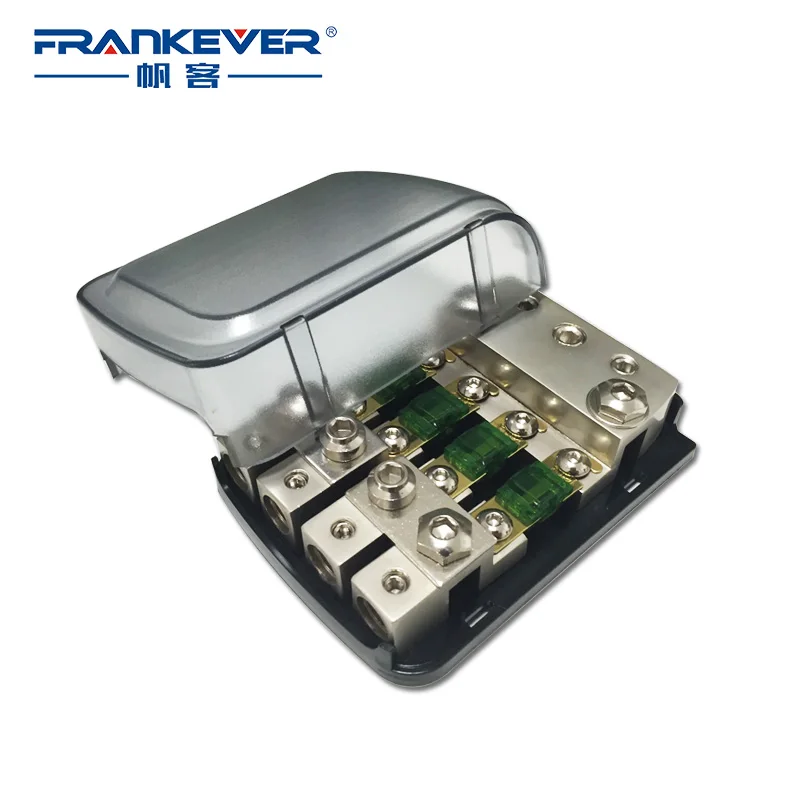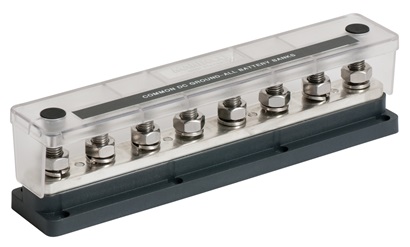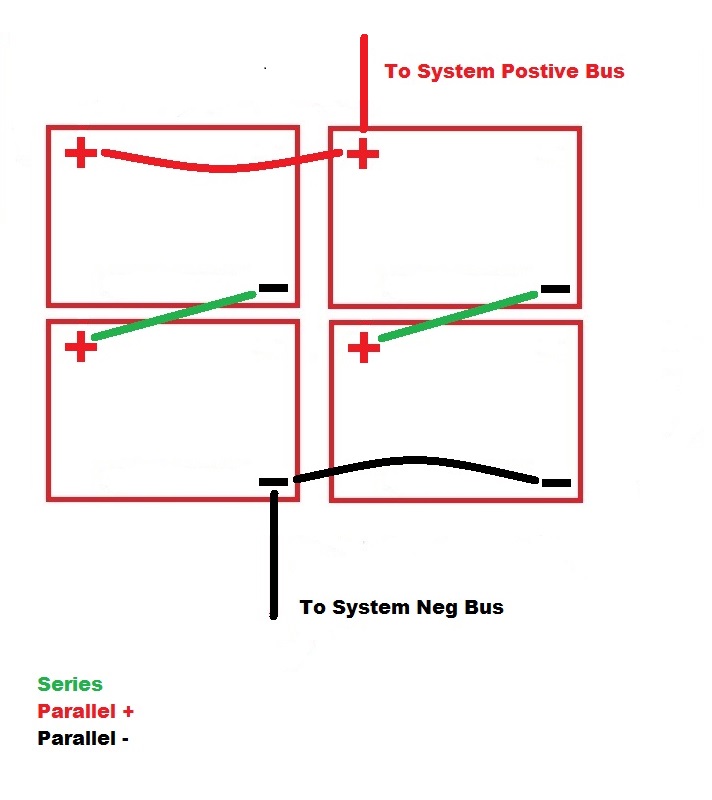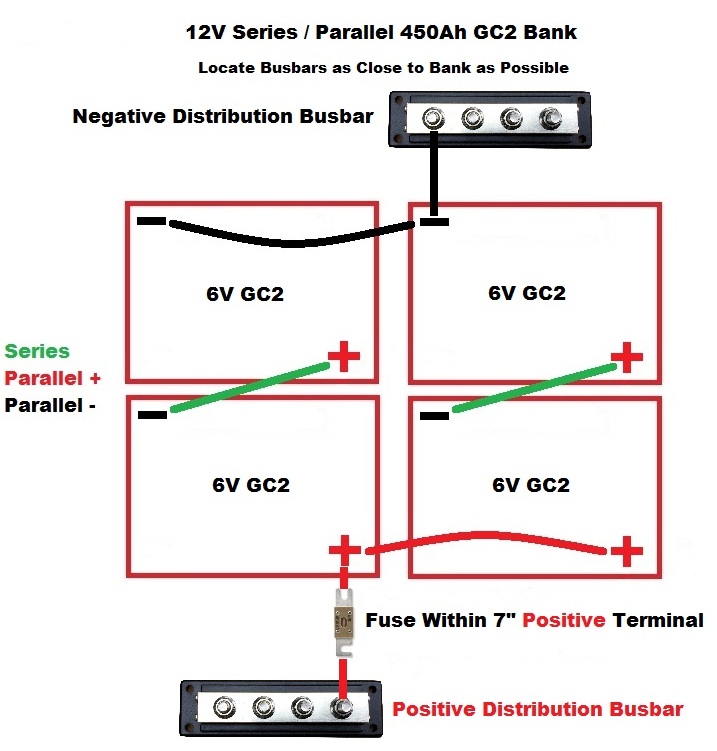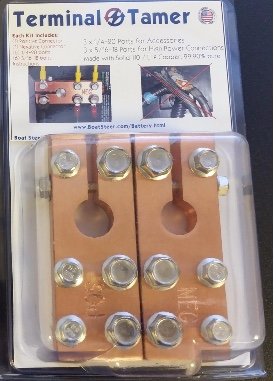Hi All,
I have 2 sets of 6V batteries in parallel (2 in each battery box). The PO had 5 positive leads off one battery in the 2nd battery set. Can you tap off the positive from the 1st box? That was a finding by the surveyor (too many leads on one post).
Dave
Add some positive and negative distribution busbars close to the positive and negative battery bank take off points, as shown below.
Ideally there are only a few things that get connected directly to the batteries themselves;
#1 Other series or parallel batteries.
#2 Positive and Negative System Take Offs
#3 Battery Temp Sensors (negative post or side of case only)
#4 Voltage Sensing
Everything else, and unless you have LiFePO4 voltage sensing can be at the distribution busbars, should be connected to the positive or negative distribution buses. Keep these busbars as close to the bank as is possible and the positive lead should have over current protection within 7" of the positive terminal. For fusing off the distribution bus there are many options including MRBF fuses, fuse distribution blocks etc.
The Marinco Pro-Installer line are quite good and they come standard with a cover for positive distribution. Just choose how many 5/16" or 3/8" studs you need. Generally you may have an inverter/charger, DC panel, windlass, thruster, alternator, charger, solar, wind, bilge pumps, head, VHF, etc. etc. all connecting to the distribution buses.
Four 6V batteries for a 12V bank in a series / parallel configuration should ideally be wired as shown..
When you add positive & neg distribution busbars it would look more like this:

